‘Cost of growth real.’ Dozens speak out on adding up to 5,000 acres to Lexington’s boundary
More than three dozen people told a committee tasked with identifying up to 5,000 acres to add to the city’s growth boundary areas they wanted to see included and areas that should be protected from development.
Others urged the committee to add the full 5,000 acres while some urged caution and more study.
“You are taking the factory floor every time you expand,” said Don Todd, a lawyer who cautioned Fayette County’s high soil quality has been the driver of its growth and its brand as the horse capital of the world.
The Urban Growth Master Plan Advisory Committee, consisting of business, agricultural interests, council and planning commission members, has narrowed its search for land to three key areas.
At a Sept. 5 meeting, the group tentatively focused on approximately 3,000 acres along the Winchester Road corridor between Royster Road and Interstate 64 in the rapidly growing east side of Lexington.
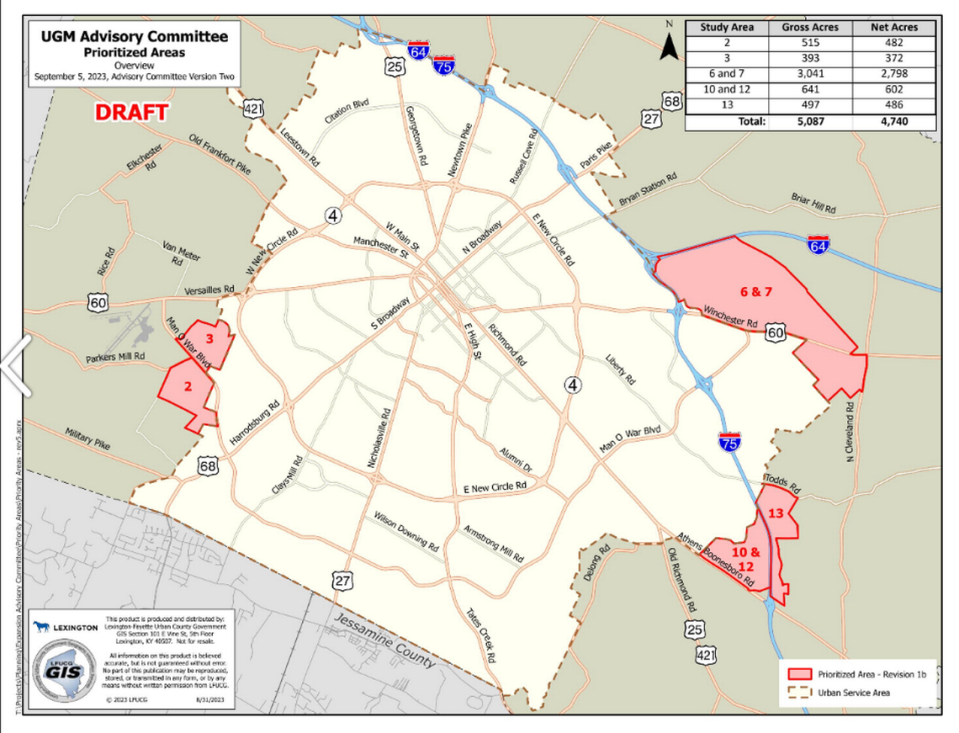
The other areas being considered include 641 acres on the north side of Athens Boonesboro Road near Interstate 75 east of Brenda Cowan Elementary. The third area is approximately 908 acres near Man O War Boulevard, Parkers Mill Road and the Blue Grass Regional Airport.
In June, the Lexington-Fayette Urban County Council voted to add between 2,700 and 5,000 acres to the urban growth boundary. The advisory committee was formed to make a recommendation to the planning commission on how much land should be added and where.
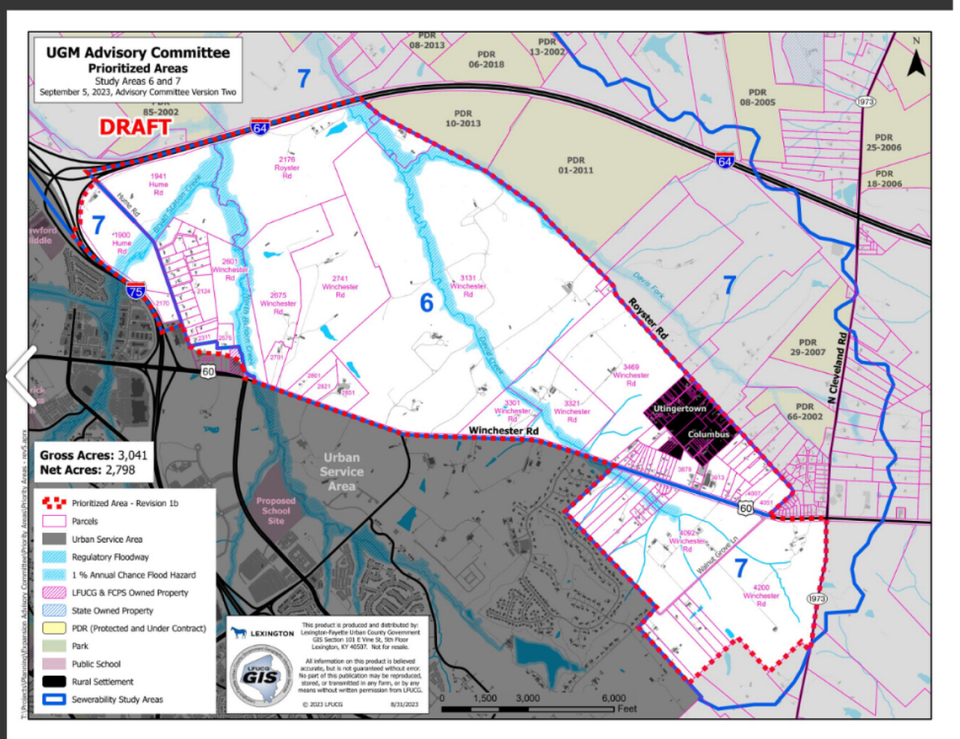
The group looked at a series of criteria to determine what areas should be added. A top concern is the cost to add sewer services. Other criteria included improvements to roads, and proximity to the current urban service boundary and protected farmland.
The last time land was added for development was in 1996 when approximately 5,400 acres was added. A little less than 2,700 acres in that boundary area has not yet been developed.
‘Ready to go now’
Many who spoke Tuesday night represented land owners who want their land to be developed.
Dick Murphy, a lawyer who represents landowners in the Athens Boonesboro Road area, said his clients are ready to develop the property.
“We are ready to go now,” Murphy said. The landowners already have sewer on the property and also would build the roads.
“There will be no cost to the taxpayers,” Murphy said.
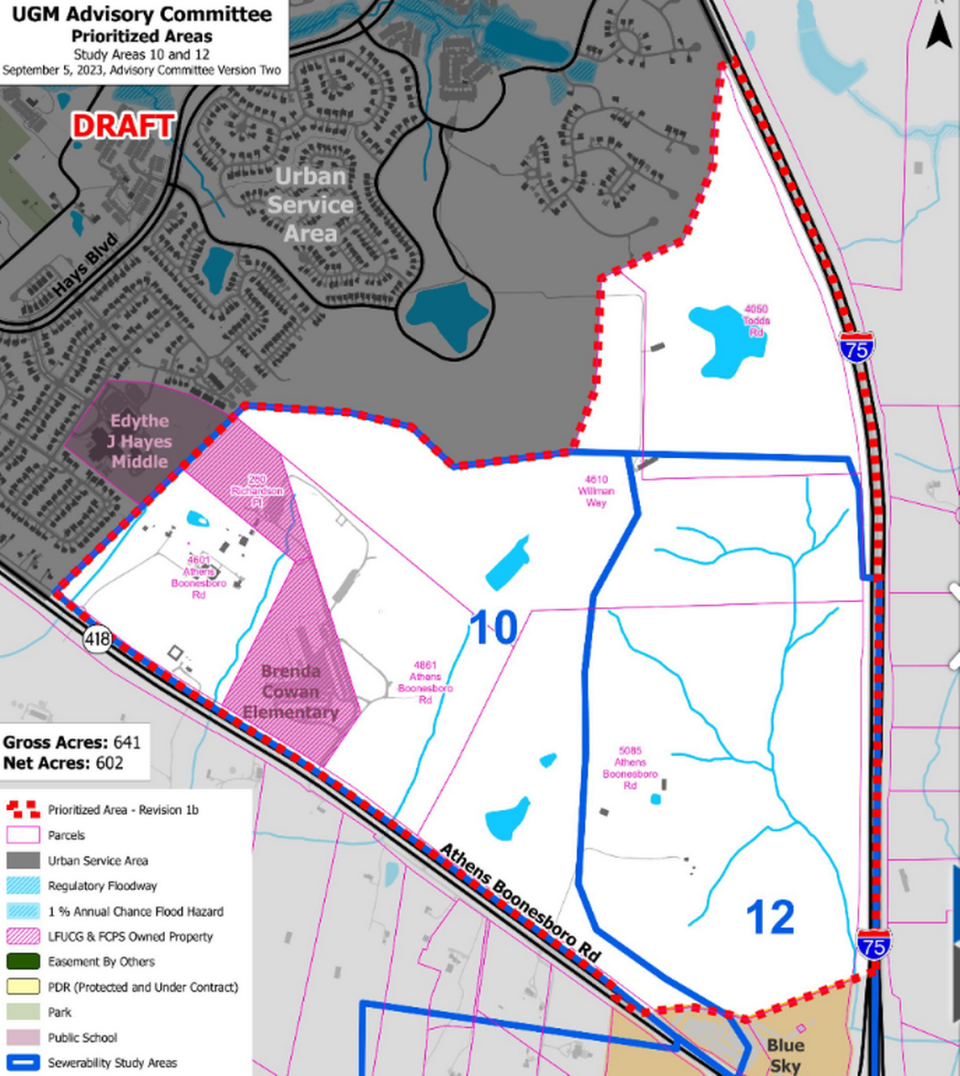
Murphy also represents landowners near Todds Road on the other side of I-75. Murphy said those landowners also will pay for new pump stations and sewer service.
“They are experienced developers,” Murphy said of the landowners. “These properties don’t have to wait for infrastructure to be built by the city.”
Greg Elam owns property along Winchester Road. His family built Elam Village, a small housing development off of Winchester Road in the proposed expansion area. Elam said expanding in that area makes sense.
“Everything is in place. You have a hospital under construction, you have schools,” Elam said. “Not many horse farms are going to be put out.”
Bob Crutcher owns property on Athens Boonesboro Road. His land is not included in any proposed expansion area, but Crutcher has long pushed to have it brought in. Crutcher urged the committee to include his land, which borders Blue Sky, in any proposed expansion.
“It’s surrounded by commercial uses,” Crutcher said.
Price Bell of Mill Ridge Farm, which is in the area around Parkers Mill Road in one of the proposed expansion areas, said his family wants the land to be included in any future expansion.
“Our family would be great partners,” Bell said. Bell said he has already developed low-income housing in other areas of the city.
Headley Bell, who is a planning commissioning member, is also an owner of Mill Ridge Farm.
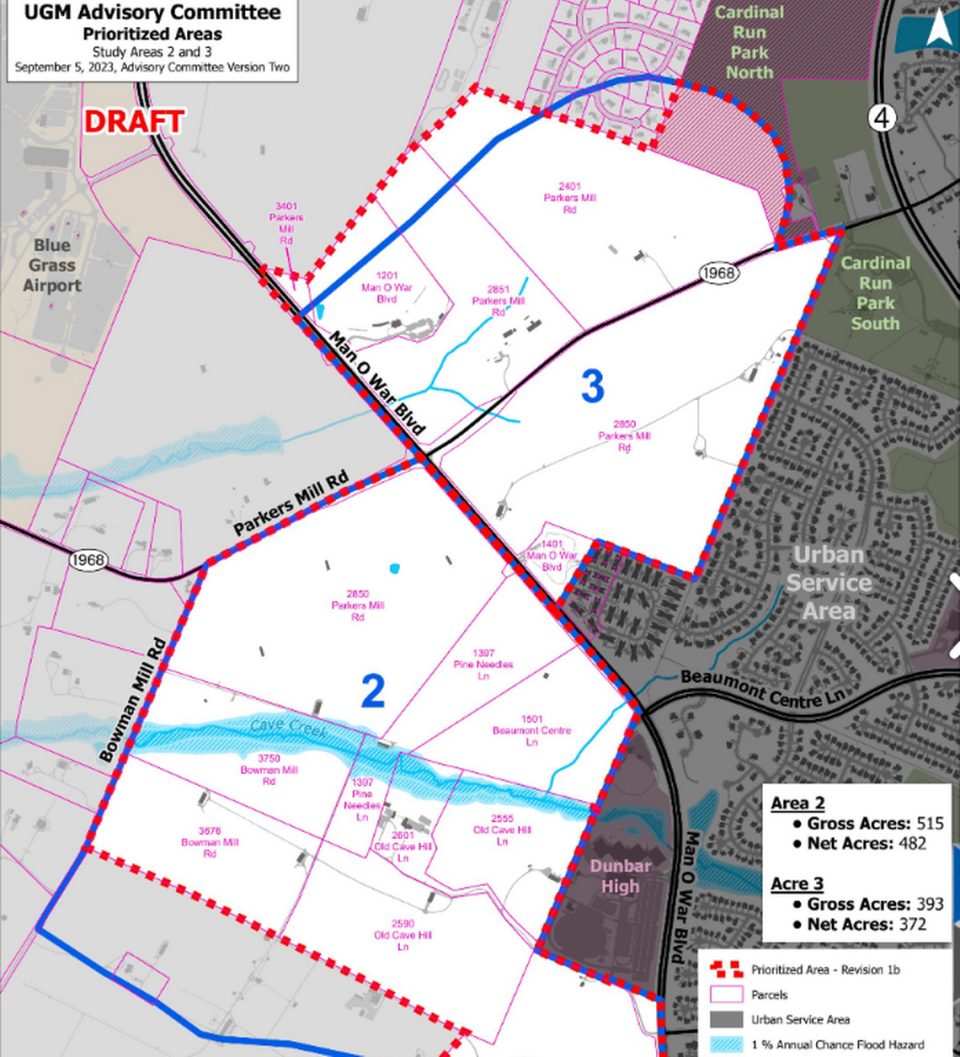
Yet one of Mill Ridge Farm’s neighbors told the committee Tuesday they were concerned about Mill Ridge Farm being developed in an area that already has a lot of traffic and development.
Carla Blanton, who has worked with Lexington for Everyone, a nonprofit group who has pushed for expansion but has refused to disclose its donors, urged the committee not to just settle on 2,700 acres.
Most people can’t afford the median home price — north of $340,000 — in Fayette County. The city doesn’t have enough housing for people who want to live here, she argued. Blanton said the city wants more high paying jobs, but has limited land to retain and recruit those jobs.
Concerns about roads, traffic and costs
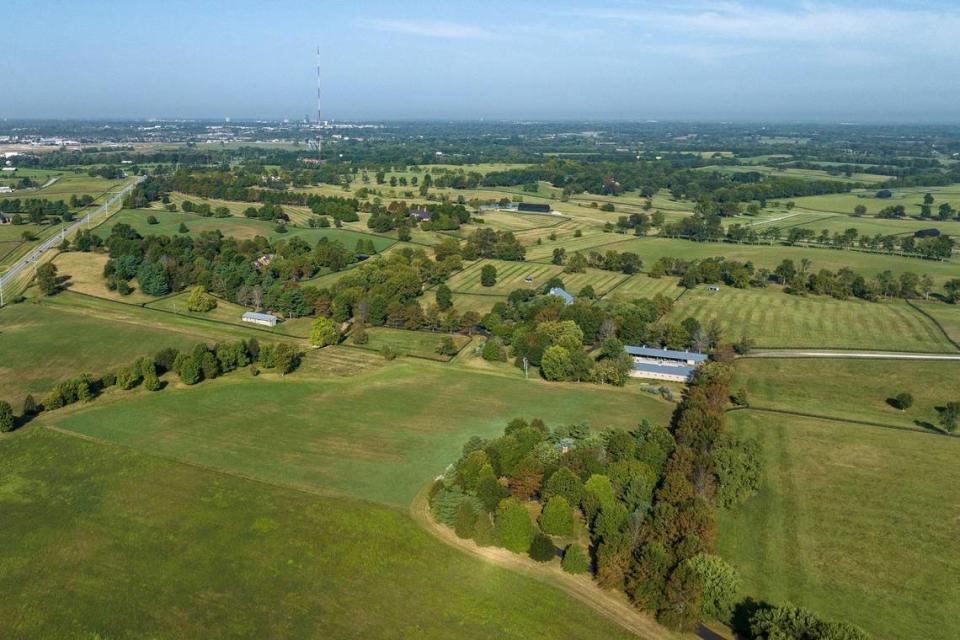
Others raised concerns about roads, raising taxes to pay for infrastructure and how urban sprawl exacerbates climate change.
“I think we need to build up and not out,” said Steve Webb, who lives off of Parkers Mill Road, a small, two-lane road.
“The traffic is so bad in Lexington, I can get around easier in San Diego than I can in Lexington,” Webb said.
Others cautioned Fayette County’s exceptional soil quality — which has made it a magnet for thoroughbred horse farms— can’t be replaced.
Nicole Hudson lives at Brookfield Farm off of Cleveland Road.
“Once this precious land is spent, there is no coming back,” Hudson said. Increasing people and traffic increases pollution, which adversely affects agriculture. That pollution does not have to be adjacent to farmland, she said.
Jim Coleman of Coleman Crest Farm, which is in the proposed Winchester Road expansion area, said he opposes expansion in that area.
“It’s an example of urban sprawl,” Coleman said.
Others said the city hasn’t done enough studies to determine the cost to taxpayers. Too much expansion too fast could be pricey, they argued.
Brittany Roethemeier of the Fayette Alliance, which represents agricultural interests, said although a sewerability study has been completed, costs to expand are still not known.
“No one has told us how much it will cost and who will pay for it,” Roethemeier said. “We need housing but we also need transparency about who is going to pay.”
Gorton: “Growth... is very costly”
Lexington Mayor Linda Gorton, who refused to sign legislation expanding the urban service area, wrote a letter to the committee reminding it that growth is very costly and needs to be done correctly.
“Providing essential city services — like sewers, road maintenance, police, fire, waste management — is very costly, and will be borne by Lexington taxpayers,” Gorton wrote in a letter to the Urban Growth Management Plan Advisory Committee. “The cost of growth is very real and must be a key factor you weigh as you consider the size of the expansion.”
In her Sept. 4 letter, Gorton urged the committee to make sure growth was compact and around major corridors that at the same time protects the city’s agricultural land.
“It is very important to protect our prime soils and to be mindful of existing agricultural operation,” Gorton said. “Our soil truly is irreplaceable, and our working farms set us apart from every other city in the world, as well as being small businesses that employ thousands of residents.”
Next steps
The group’s work is not finished.
The group has two more meetings before making a recommendation to the planning commission in October. A consultant will then be hired to develop a master plan for whatever land the group decides should be added to the growth boundary. That master plan must be completed by December 2024, according to the council’s mandate.
A lawsuit has been filed challenging the proposed expansion.
The Fayette Alliance, a nonprofit that advocates for rural interests and smart planning, and several private landowners filed a lawsuit challenging the council’s authority to add acres to the urban service boundary. It has also asked a judge to stop the work of the advisory committee until the lawsuit challenging the boundary is completed. Meanwhile, the city has filed a motion asking a judge to dismiss the case, saying the Fayette Alliance and several private land owners do not have legal standing to challenge the expansion.
A hearing in the case is set for Oct. 5.

